#New Renaissance
Explore tagged Tumblr posts
Text









Something from an age I was not yet born into,
a girl like me, yet completely different.
Who is she?
#1960s#1960s fashion#60s#60s icons#60s fashion#60s aesthetic#vintage#vintage aesthetic#vinyl records#literature#poetry#classic literature#moodboard account#moodboard aesthetic#moodboard#vintage moodboard#vintage women#60s girl#girlhood#60s core#lover#love#all you need is love#the beatles#marylin monroe#sharon tate#beatles#new renaissance
26 notes
·
View notes
Text
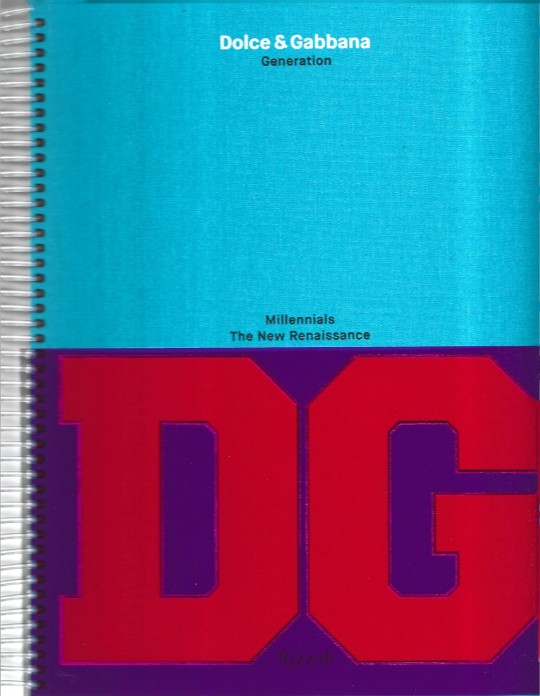
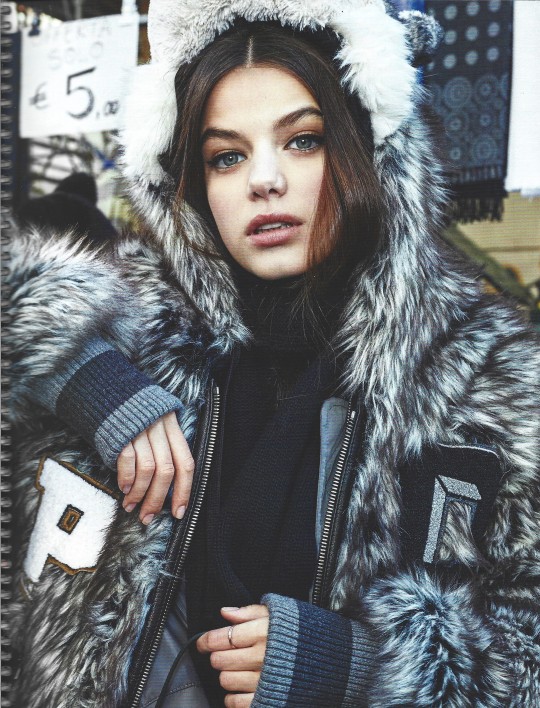

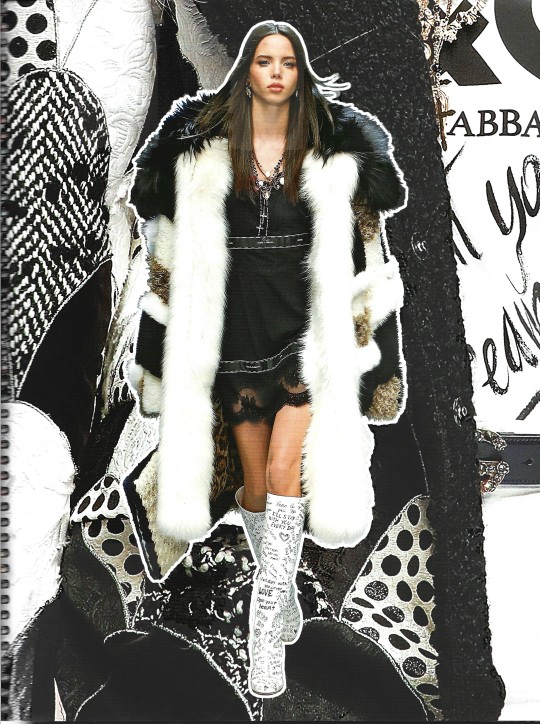

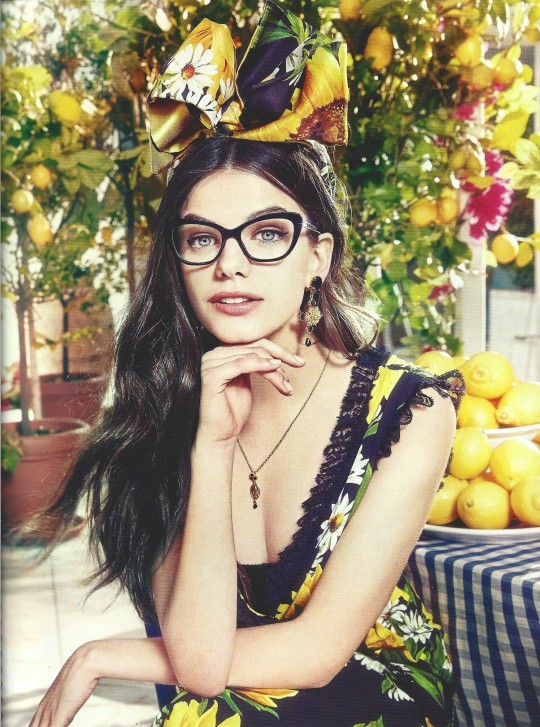
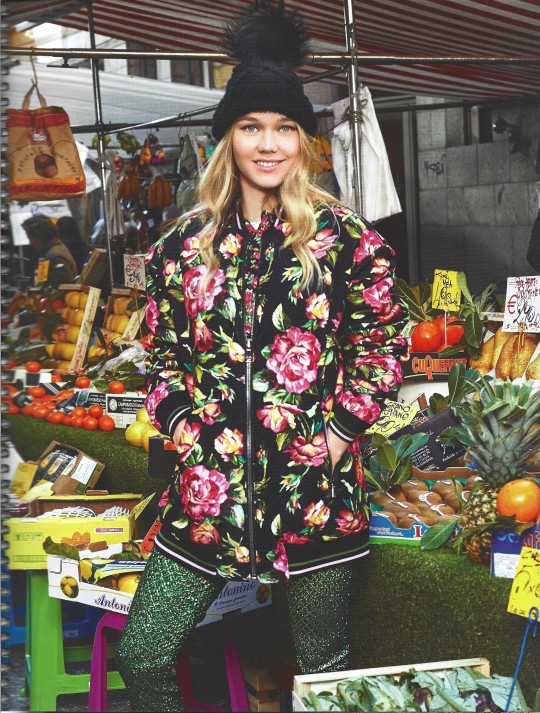
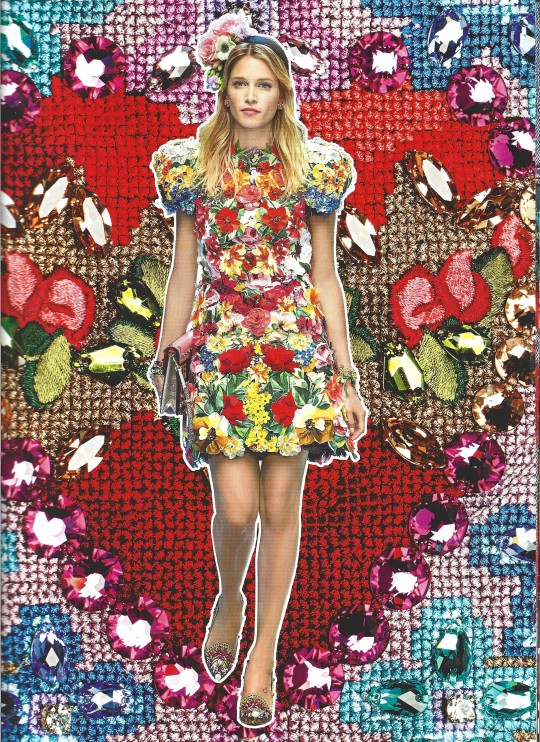

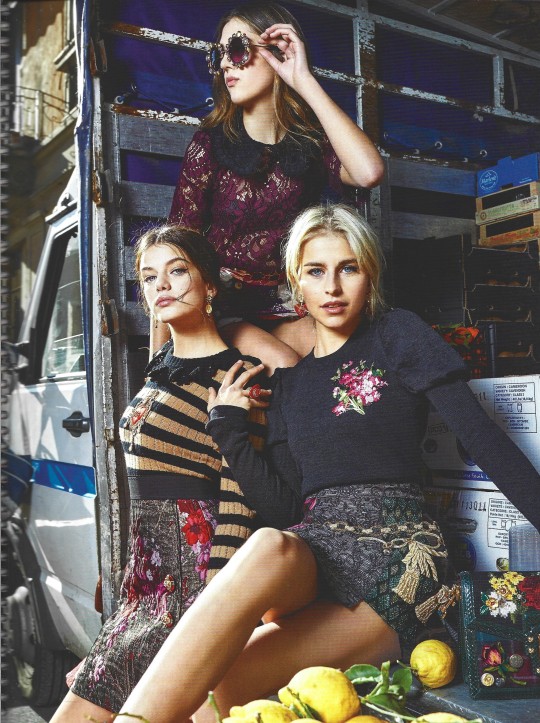

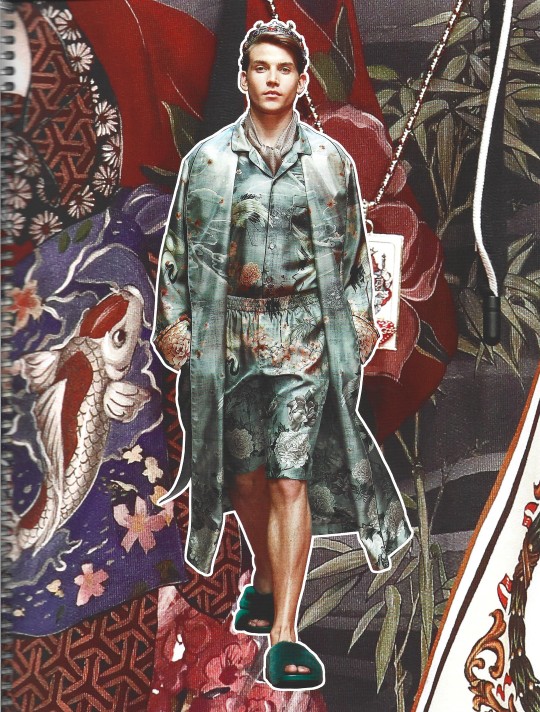
Dolce & Gabbana Generation
Millennials The New Renaissance
Domenico Dolce and Stefano Gabbana
Electa, Milano 2017, 22x28,2cm, ISBN 9788891816610
euro 180,00
email if you want to buy [email protected]
Dolce&Gabbana turns the spotlight on a selection of young influencers who are changing the rules of contemporary communication through their style expertise and their flair on Instagram. With millions of followers, the new royalty of social media are the offspring of actors, actresses, singers, and models: from Cameron Dallas to Rafferty Law; from Zendaya to Austin Mahone; from Brandon Thomas Lee to Sonia Ben Ammar, to name but a few. In this project, the millennials who form part of this surprising gang of under-35 VIPs reinterpret Dolce&Gabbana fashion, blending the label's clothes with their own exuberant personalities. The book not only presents iconic portraits of the digital generation through the most significant photos from fashion shows, advertising campaigns, events and selfie snapshots, it also shows a completely new way of thinking and of perceiving reality.
27/09/23
2 notes
·
View notes
Text

Been re-watching gravity falls for the summer
#new sticker design? maybe??#dipper pines#mabel pines#gravity falls#fanart#my art#sticker design#artists on tumblr#digital art#pines twins#I’m so glad it’s having a renaissance lol#they’re soooooo cute#bill cipher#he’s there you just gotta look
29K notes
·
View notes
Text


its time
30K notes
·
View notes
Text
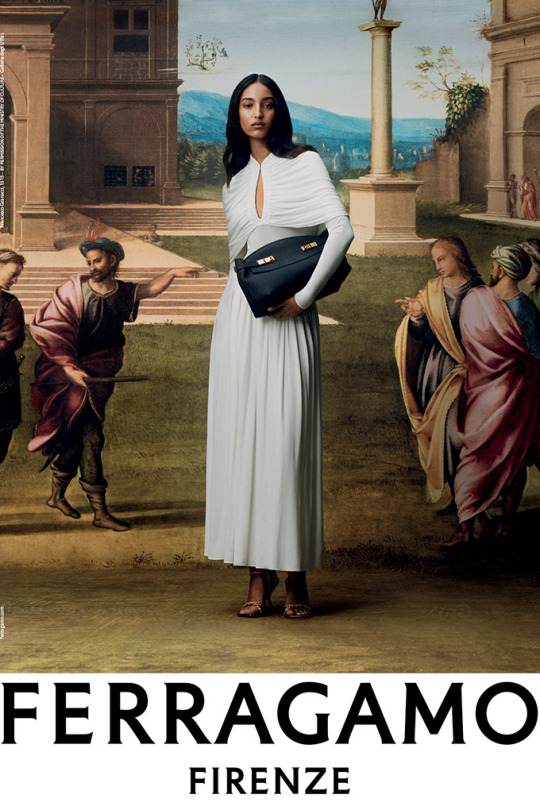
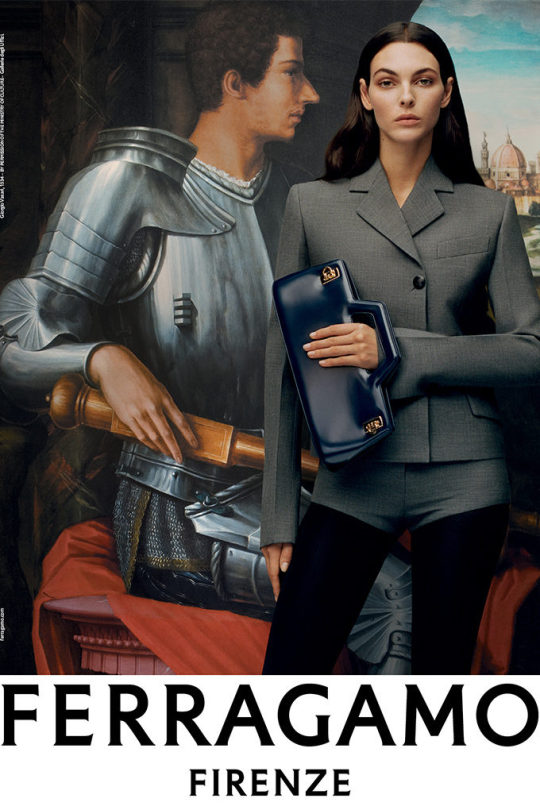
Can the aura of a cultural property affect fashion’s IP? What Ferragamo’s Fall/Winter ‘23 fashion campaign with the Uffizi might tell us…
As anyone who reads my Fashion by Felicia musings and other scholarship knows, I’m a bit Ferragamo obsessed. I can’t really pinpoint where my fascination with this Italian heritage brand started. I’m sure it’s lodged deep in my six year old self. It's somewhere in between walking around Florence to Gilli for a hot chocolate and spotting the windows of Palazzo Spini Feroni and observing aristocratic Florentine ladies of a certain age (immortalized in a Milanese version on sciuraglam) wearing their Vara shoes with a slightly adolescent bow that seemed to me to communicate that a six year old Italian-American girl from the Midwest now relocated to a new Renaissance context could really grow up to be that much of an elegant, sophisticated signora. But, no matter where this obsession began, suffice it to say that when I started to explore the links between fashion heritage and art history in my undergraduate studies, the Ferragamo Creations line and the Ferragamo Museum seemed to me the best place to start. Fast forward a decade, and the richness of the Ferragamo example, and its embrace of the multiple facets of its founder’s life and talent as part of its brand heritage, is still offering multi-faceted examples and case studies, from expired patents and exhibitions to gold sandals and Rainbow sandals reimagined from the archive and, now, a Fall/Winter ‘23 campaign at another treasured heritage space in Florence, the Uffizi.
Now, when you saw the announcement of Ferragamo’s campaign, you might have thought (like Cher in Moonstruck)- wait a minute! Didn’t the Uffizi just object to Gaultier’s use of The Birth of Venus? Wasn’t there some outrage at the idea of Chiara Ferragni posing in the Uffizi galleries just a few years ago? Why is Ferragamo a “yes” now but Gaultier was a “no”? From a purely technical, legal point of view, there is an answer.
The Uffizi is classified as a special autonomous museum which, while still a public cultural institution under the purview of the Italian Ministry of Culture, makes specific choices as part of its autonomy and mission to protect, manage, and enhance the cultural properties it holds in its collection. You can read more about the reform of Italian museums in 2014, the designation of certain museums as autonomous institutions, and their relationship to the Ministry of Culture’s General Directorate for Museums in Italy here. Part of the protection and enhancement (or valorization) of the cultural properties in the Uffizi collection includes preserving the tangible painting you see when you visit the Uffizi. It also includes deciding how to best use the intangible image of the painting. You also might think of this intangible image of the painting as the tangible composition that, thanks to photography and our iPhones, has become decidedly intangible. In other words, part of the Uffizi’s mandate includes managing the cultural interest that we attach to a painting that is a cultural property, like an oil on canvas by Giovanni Bellini (see a Ferragamo model in front of it here). This management includes protecting the very existence of the tangible painting, and also being sure that painting is properly valorized- that access, enjoyment, and education related to the unique cultural interest the painting has for us is properly supported and communicated.
Reproductions of cultural properties are part of this valorization conversation. Under Articles 107 and 108 of the Italian Code of Cultural Heritage Law, the Uffizi and the Ministry are allowed to authorize reproductions of the cultural properties in the Uffizi’s collection that are used for commercial purposes. Carved out of this “authorization” are uses related to freedom of expression. No need to worry if you are a considerate, mature American tourist just taking a picture for your personal Instagram (avoid carving love notes on the Colosseum!). Of course, in our personal branding times, what counts as commercial and non-commercial is a spectrum and not a bright line. What if you use your Instagram to promote tours you give or other creative projects, and not just as a travel diary for family and friends? That’s a current hot button issue. Suffice it to say that, for many Italian museums and by extension the Ministry of Culture, commercial use is an important weight on the scale in favor of authorization and, depending on the particular use, the payment of a fee. Many of the latest cases finding that commercial uses of images of cultural properties required authorization and the payment of a fee lean on the concept of public fruition as a justification. The museum, the argument goes, is entrusted with assuring a “qualified and complete process of knowledge of an object, of a reality that becomes a part and the heritage of the single and collective culture…” (Tribunale - Firenze, 11/04/2022, Rg. 1910-2022). The authorization process is the main vehicle for this assurance.
You might also think of this assurance as a quality control of the work of art/cultural property’s aura in an age of mechanical (and digital) reproduction, as so expertly introduced into our lexicon by Walter Benjamin. As John Henry Merryman said, we care about a cultural property’s ability to tell us “the truth”, to be authentic and to testify- that is essentially the essence of our public interest in cultural property and, more broadly, cultural heritage. The regulation of images of works of art that qualify as cultural properties under the law is essentially a control over the stories that cultural properties tell. Cultural institutions have an interest, in light of their mission, in supporting some stories over others. Of course, we can debate which stories and for which stakeholders and Merryman’s own conception of “truth”, especially in light of the importance of diversity for museum audiences, and the very relevance of certain museum missions today- here’s looking at you British Museum. The question of what that support looks like, and how far cultural dialogue should be stifled in the name of truth and authenticity, is a foundational one. Of course, one need only look at the Uffizi’s brilliant TikTok channel to see how open that particular cultural institution is to cultural dialogue, translating their cultural properties to new contexts, and embracing Gen Z for the benefit of culture.
So, short answer? Ferragamo asked for permission to use images of the cultural properties in the campaign and followed Italian cultural heritage law. Ferragamo’s proposed use was deemed in line with preserving and valorizing the cultural properties that would be featured in the campaign by the Uffizi. Gaultier seems to not have even asked for authorization, either as a first matter or after a cease and desist letter from the Uffizi. Hence the characterization of the use of the image of The Birth of Venus in a capsule Gaultier collection as illicit.
But assuring public fruition and the valorization of cultural property doesn’t always require giving a museum the right to check the use of an image of a painting and/or control its aura. Other museums, and other jurisdictions, take different pathways. This is part of the reason why Italy’s regulation of the reproductions of cultural properties has seemed to be like a mutant copyright to so many. In the United States, for example, we relegate images of paintings that have aged out of copyright law to a robust public domain. And this rule, following some contested museum and art database policies, has over time extended to many cultural institutions. A case in point: The Metropolitan Museum of Art and other museums embrace Open Access policies that allow commercial uses of the images of paintings in their collections. Of course, this doesn’t stop The Metropolitan Museum of Art from partnering with Pacsun- placing images of paintings on loungewear sold in their giftshop, partnering with creative teams to re-interpret the works in their collections in new designs, and leveraging their “THE MET” Logo to create consumer recognition on the fashion and retail market. And it is here that a cross-pollination of sorts begins to emerge between cultural heritage law, IP law (and by that I specifically refer to copyright law and trademark law), and their negative spaces. There is already an argument to be made under Italian cultural property law that some uses of images of cultural properties may be so creative that they are effectively kicked out of a cultural property licensing regime (for more on that argument see here and here). And the same creativity that removes certain uses from a cultural property licensing regime might be enough, in certain circumstances, for the spark of originality required to enter the copyright regime. But, to quote the great Whitney, how will we know? Is there a threshold for creativity and originality in fashion when fashion builds on cultural property and its aura?
In an insightful recently published article, Intellectual Property and the Manufacture of Aura, Bechtold and Sprigman coin a useful phrase with which to think about this question – “auratic narrative.” Auratic narratives are essentially a product of law, marketing, social norms, communities, and businesses and succeed where there are multiples. We might think of them as “invented heritage” (p. 348) but also as a storytelling that builds on facts and adds a healthy dose of mythmaking, creating brand heritage. Bechtold and Sprigman identify how auratic narratives may highlight a connection to an author (p. 306) (like Salvatore Ferragamo for Salvatore Ferragamo the brand), a place-narrative (p. 324) (like Florence, Italy for Salvatore Ferragamo the brand), and even originality narratives that focus on provenance (p. 330) (like blockchain mechanisms or an NFT with a Ferragamo sneaker that traces one of many shoes back to the brand). At times copyright law and trademark law (p. 323-324) may recognize auratic narratives. This has especially been evident in copyright law when certain jurisdictions have implemented “museum tests” (p. 310) or even deployed the use of “iconic” (as in the Moon Boots case in Italy, see p. 315 and here), connecting designs to specific authors and moments in history. In this sense, then, cultural strategies (p. 312) that involve cultural properties and partnerships with cultural institutions can be a key move for fashion brands and their designs. These strategies and partnerships create auratic narratives that buttress originality, support secondary meaning, or, at the very least, create a marketing campaign that makes a product unique and precious, the authentic original even if defined by copies.
And this brings us to the Fall/Winter ‘23 Ferragamo campaign. Photographed in front of works of art in the Uffizi collection, Maximilian Davis’ designs for Ferragamo are presented as indicative of a “New Renaissance.” With reference to the collaboration between the Uffizi, The Italian Ministry of Culture, and Ferragamo, you might have noted the credit “By permission of the Ministry of Culture- Gallerie degli Uffizi” as you scrolled through the Instagram captions. In Davis’ words, “The Renaissance is hardwired into Florence, and Florence is hardwired into Ferragamo. At this time of a new beginning at the house, it made perfect sense to reclaim the cradle of the Renaissance as our spiritual home, and to harness the deep, artistic spirit of this city to showcase the new collection.” Far from just placing models dressed in Ferragamo in front of works in the Uffizi galleries and its behind-the-scenes areas, some models seem to have been digitally placed inside the paintings, especially Francesco Granacci’s tempera on wood and Giovanni Bellini’s oil on canvas. Reclaiming the Renaissance includes painting Ferragamo in as a central character of these Renaissance compositions. In essence, laying claim to the aura of these paintings as part of Ferragamo’s own auratic narrative. Will adding in Renaissance layers to Ferragamo’s designs make us recognize Ferragamo’s designs as more Florentine than other luxury brands? Will this Florentine connection increase Ferragamo’s Made in Italy value on the market and, perhaps, make these 2023 designs more impactful in the history of design, so as to render them iconic or, in the future, indicative of a historically important “fus[ion] of beauty and innovation”? Time will tell but, as long as there is an aura for cultural property, and museums that participate in fashion’s origin stories, there may be an auratic narrative to buttress fashion’s IP rights.
Additional References
http://musei.beniculturali.it/wp-content/uploads/2018/04/Allegato_I-Livelli-uniformi-di-qualit%C3%A0-per-i-musei_English.pdf
http://musei.beniculturali.it/notizie/notifiche/sistema-museale-nazionale-pubblicato-il-decreto
Le Gallerie degli Uffizi initiatives between cultural heritage and copyright law, Presentation by Avv. Serena De Laurentiis, ALES S.p.A. and Gallerie degli Uffizi, June 2023
Lorenzo Casini, The Public/Private Dialectic in the Valorization of Cultural Heritage (forthcoming in The Italian Law of Cultural Heritage: A Dialogue with the United States, conference proceedings, Florence, Italy, June 2022)
Lorenzo Casini (2018) The long and winding road to the establishment of state-museums in Italy, Museum Management and Curatorship, 33:6, 546-554, DOI: 10.1080/09647775.2018.1537616
John Henry Merryman, The Public Interest in Cultural Property, 77 CAL. L. REV. 339 (1989)
Felicia Caponigri, Images of “Italian” Cultural Properties: Some Thoughts on the Italian Code of Cultural Heritage Law’s Articles 107 and 108 for an American Audience (forthcoming, The Italian Law of Cultural Heritage: A Dialogue with the United States, conference proceedings, Florence, Italy, June 2022)
Heymann, Laura A., Dialogues of Authenticity (July 29, 2013). 67 Stud. L. Pol. & Soc'y 25 (2015), William & Mary Law School Research Paper No. 09-247, Available at SSRN: https://ssrn.com/abstract=2302696
Images
https://www.ferragamo.com/shop/us/en
#salvatore ferragamo#cultural heritage law#IP law#fashion law#botticelli#cultural property#pac sun#the metropolitan museum of art#Made in Italy#aura#Walter Benjamin#Renaissance#New Renaissance#Copyright law#Trademark Law#auratic narrative
1 note
·
View note
Text

SCAMMERS When many entered the New Renaissance era, scammers saw fertile grounds for rip-offs and rug pulls.
0 notes
Photo



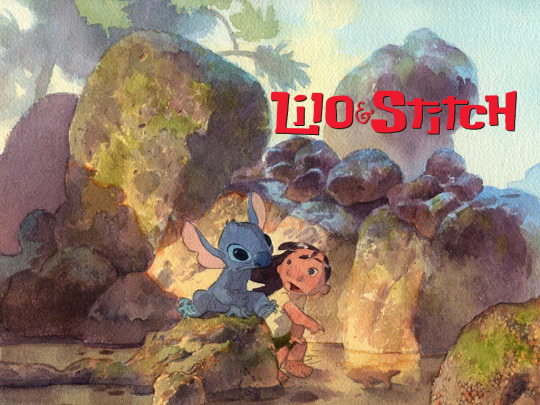
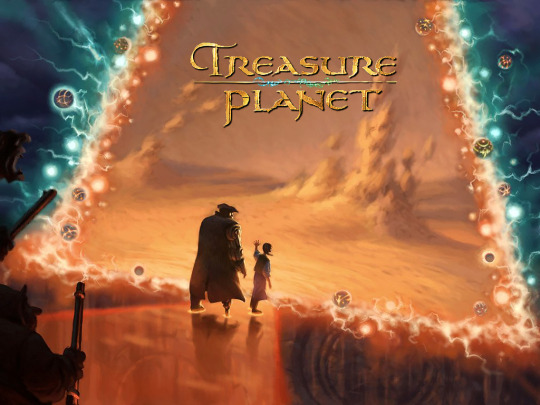
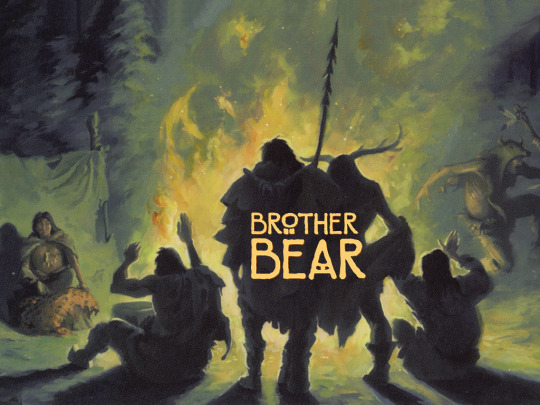

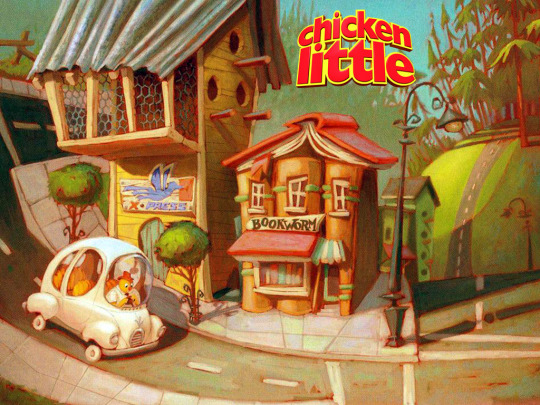


𝙳𝚒𝚜𝚗𝚎𝚢 𝚌𝚘𝚗𝚌𝚎𝚙𝚝 𝚊𝚛𝚝Iᴛʜᴇ ᴘᴏꜱᴛ-ʀᴇɴᴀɪꜱꜱᴀɴᴄᴇ [ᴇxᴘᴇʀɪᴍᴇɴᴛᴀʟ] ᴇʀᴀ (2000 - 2008)
#most of these films are underrated tbh#except chicken little#it's the worst disney movie ever imo#disney#disney concept art#the experimental era#the post-renaissance era#animation art#art#artwork#illustration#visual development#disney animation#disneyedit#dinosaur#the emperor's new groove gif#atlantis: the lost empire#lilo & stitch#treasure planet#brother bear#home on the range#chicken little#meet the robinsons#bolt#mine#disney eras
13K notes
·
View notes
Text


who tf is bella playing twister with? 😭
#i saw twilight on the big screen tonight and this is something i haven’t noticed before#does edward play it at night?#does she take it to family game night?#i need answers#twilight#twister#board games#bella swan#edward cullen#twilight renaissance#twilight saga#breaking dawn#eclipse#jasper hale#jacob black#renesmee cullen#esme cullen#carlisle cullen#rosalie hale#new moon#alice cullen#emmett cullen
1K notes
·
View notes
Text
what makes me actually boil with rage is the way it’s framed as though jacob & the cullens have an even rivalry and like, he hates them just as much as they hate him, but like… jacob is a lower class kid who lives on the rez, the cullens live in a plantation home on private property. jacob calling alice a leech is an insult, but alice calling him a mongrel calls into power and privilege, ya know. like am i supposed to honestly think jake making blonde jokes to rosalie (which is certainly sexist and uncalled for) is on the same level as her serving him food in a dog dish? him seeing the cullens as bloodsuckers and murderers is just like, incorrect and unfair, but them seeing him as uncivilized and over-aggressive has implications deeply rooted in the oppression of his people

#this post is not gonna be popular but i just had to say it#jacob black#the twilight saga#twilight#twilight blog#edward cullen#alice cullen#rosalie hale#new moon#eclipse#breaking dawn#bella swan#twilight renaissance#mine#jake
5K notes
·
View notes
Text

#twilight#twilight renaissance#edward cullen#charlie swan#twilight saga#midnight sun#twilight fanfiction#new moon#Charlie’s choice
970 notes
·
View notes
Text
Twilight New Age

After inheriting her grandparents house in the Quileute reservation, La Push, Y/N moves to her home rez. Hoping to start a new life she is soon involved with what she thought were just old legends.
Paul Lahote x Reader
Romance | Fantasy | Drama | Angst
CHAPTER 1
>> CHP 2

Y/N did not expect her life to turn out the way it has. She led a normal life, as normal one can be, at the age of twenty one. Like most her age she was confused on what she wanted in life. What she knew was she wanted to be an artist. That’s something she always knew.
At the start of the year her grandfather Quil Ateara III passed unexpectedly. It was a huge loss for not only her family but the community of La Push. Y/n’s home reservation, where her grandfather had served on council for many years, a well respected elder.
As If any of it wasn’t enough for y/n the family decided to read his will. Discovering he had left her with the estate and property under her name. Yet it was never brought it up to her in their many visits. Shocking the whole family it caused an uproar.
Her own mother was surprised at this news. Everyone figured he’d leave everything to at least one of his children. Her grandmother Molly was the only one not surprised. Instead she ensured that y/n would move in by the end of the season. And that no one could argue since it was her husbands will.
Even if it was passed onto her mother, or her many uncles and aunts, no one wanted to uproot their lives to live in the house. In fact the family was ready and planning to sell the house. Deciding to split the money between everyone and cut their losses on the property. But her grandparents wouldn’t have any of it happen.
And so it was y/n was on her way to her “new” house. Her grandmother Molly had already moved in to her sisters home. As a way of keeping an eye on each other now that they’re both older.
For y/n it was all so fast but an opportunity would never come like this again. For she had been desperate for a place on her own. A studio apartment wasn’t an ideal space for someone who loved, well, space.
It was a three story house with a wrap around porch. Fit with five bedrooms and one bathroom. As she drove y/n thought of how expensive and difficult it could get to maintain such a house. But she figured she’d at least try before trying to get a roommate.
Although it was all new and quite stressful to think of. Y/n was excited to be back in her beloved home of La Push. She had only visited a few times throughout each year. And as of late she hadn’t been around much with life catching up to her.
Driving down the same old roads she couldn’t help but feel nostalgic. How many summers she spent here and what good memories were made. The scenery was always something y/n favoured especially the tall beautiful pine trees.
Despite the constant downpour of rain it made y/n happy. Even just the smell of rain and dirt made her smile. It was a moment y/n wanted to savour for herself, entering the reservation, it felt like she never left.
The road was wet from soft rain throughout the day. The clouds blocking the sun from shining. Looking at the sides of the road the hairs on her neck suddenly spiked. A weird feeling in her gut began to twist and turn.
As she looked on each sides of the road it felt eerie. Although she drove down familiar roads it didn’t feel right. As if there were eyes peering a hole in the back of her neck. Rubbing the spot in comfort she tried shaking off the unsettling feeling.
After all she was stressed and tired after a long drive she convinced herself. Upon seeing the house she was relieved. Her grandma was supposed to be here before her. But her car wasn’t parked in the driveway.
Parked in the car y/n sat awaiting for either the eerie feeling to go away or for her grandmother to arrive. As she sat and decided, she noticed in the window stacks of boxes, she had sent her stuff beforehand. With the help of her cousins they moved everything inside.
Impatient and no longer anxious she got out of the car. The property has a clear and neat tree line. The backyard was a huge open field filled with wild flowers. Although at the moment it was still too early in the spring for such flowers. The field sat in colours of yellows and browns.
Y/n searched around the area in case of anything. Taking a short moment to look. With nothing around she headed inside. Deciding to unpack until her grandma arrived. She grabbed the rest of her belongings from the trunk.
Sure enough It didn’t take long for her grandma to pull up in the driveway. As y/n headed outside to meet her she felt even more relief. Seeing the soft smile on her grandma’s face brought her comfort.
“My girl! You’re finally home” she said into her neck as they hugged tightly. “Yep! Finally home for good” y/n replied holding onto her grandmothers hands. The two headed inside to catch up with one another.
Her grandmother Molly and her were always close no matter the distance. In times of need she always called her for advice. To be living more close to her was a blessing in itself.
“I would’ve been here long time ago but I had a meeting. It ran longer than it was supposed to” Grandma Molly took her grandfathers place on council once he passed. As she felt it was her responsibility to him and the community. The people had also unanimously agreed for her to take the position.
“It’s alright grandma it gave me extra time to unpack” which was mainly just her clothes. Scanning the room over the endless boxes her grandma fussed over y/n.
“There’s plenty of time for you to do that. Now that you’re home” her grandma smiled warmly once more. “You’re right but it’s just I need groceries” y/n replied as she looked around the fridge.
“I left you plenty of dry goods in the cabinets. But I took what was in the fridge and freezer. I figured we’d go now and shop for something more fresh” y/n wasn’t surprised at her grandmas smart and thoughtful thinking.
Agreeing the two stepped out of the house. Only to be met with the arrival of her cousin Quil Ateara V. Pulling up in his black truck he wore a cheeky grin. Immediately he stepped out and rushed in for a hug.
Quil was another one of her cousins she grew up close with. Besides herself Quil was close with their grandparents. Majority of the family relied on Quil and his help. It comforted y/n to know she’d see him more often now.
“Good to see you sis” he said as the two pulled away from each other. “You too! I was gonna text you but I’m glad to see you! I’ve been meaning to thank you for the help. Moving the furniture for me was a huge help for real”
“Easy work. If you need anything just let me know” Quil was always cocky and loved to tease. He could be serious when needed to. It was something y/n somehow missed in their time apart. Although she knew that behaviour was bound to wear on her. For now she was enjoying the moment.
“We were just going into town. What are you up to?” Grandma Molly asked Quil. Shrugging his shoulders he replied “Not much just about to stop in at the house. Wanted to see if this girl was home yet or not” he smiled as he nudged y/n’s shoulder.
Y/n smiled before an idea popped into her head. “How about the three of us eat dinner? On me? I’m famished and I do owe the both of you” she replied as the two agreed. “You don’t owe us anything we’re family” Grandma Molly assured y/n as the two walked to the car. “But I will take you on that offer” she joked making the other two laugh.
“Well I have my truck so I’ll meet you girls where?” Quil asked whilst twirling his keys. The three threw out suggestions. Grandma Molly and Quil ended up squabbling over which place to eat.
“How about Carver’s? Y’know I haven’t been there in ages” y/n suggested trying to end the arguments. It worked as everyone agreed. Y/n and her grandma went together as Quil followed in his truck behind. The drive was short but eventful. As grandma Molly continued to give her an update on everyone in the reserve.

Somewhere behind them Quil had veered off the path. But y/n knew he would eventually come behind. Vouching to get a table without him until he came the two headed inside. As y/n held the door open for her grandmother, before she could enter, a man rushed to hold open the door.
“Here I got it” the man said, he stood tall way over six feet and was obviously Quileute, despite cold weather he wore only a long sleeve shirt. Y/n briefly looked at him before a surprise walked through the door.
“Y/n? Grandma Molly? Oh my god! It is true you’re finally home!” Out rushing was her cousin Kim Conweller. She grew up with her close, the two were always together, but recent years they’ve been in and out of touch. The bond between them has never faded.
Growing up Kim, Quil, and y/n were close as a trio. They were the eldest out of their cousins. It had been awhile since the three of them were under one roof. Y/n felt overjoyed at her so far warm welcomes from everyone she’s seen.
The two hugged tightly albeit y/n was surprised. “Kim! Hi yes I’m home for good now! I’m glad to run into you” she smiled as Kim gushed. “Grandma here told me a few weeks ago you were moving down. I wasn’t sure if you actually were but here you are!” Kim gushed with a bright smile.
Y/n smiled back before looking up at the man who held the door. Who stared down at y/n, with curious eyes, it felt like the two somehow knew each other. Kim took notice and nervously laughed clutching onto his arm.
“Sorry y/n you caught me off guard. This is my boyfriend Jared Cameron and this is my cousin y/n“ Kim introduced the two as Jared reached out for a handshake. When she did he wore a welcoming grin holding a firm grip on her hand. It was almost like it burned to touch him with how warm he was y/n thought.
She had heard of Kim speak of Jared when they talked. Even when he was nothing more than a high school crush to Kim. But y/n never knew anything more than his name and who his family was. She has always been curious as to who he really was.
“Great to meet you y/n I heard a lot about you from Kim” Jared said as he stood beside Kim. Making y/n look at Kim with an eyebrow raised. “Hopefully she didn’t say too much” she joked as the rest of them laughed slightly.
Before Kim answered she gave a quick glance to Jared. Then with a bright smile she replied “Of course not! I’ve just been excited to know you’re back home. It’ll be nice to have a close girlfriend around” Kim said as it was true.
Y/n was the only girl she knew who was into feminine interests. Such as beauty, fashion, and everything in between. When these two meet it was always a blast.
“Yeah me too I’m glad to have seen you Kim. You should stop by the house this week. Once I get more settled in” y/n offered. After all it’d be great to have a visitor or a helper to unpack. It’s been long enough since it was just the two of them.
“Yeah of course just send me a text. Well we better get going it looks like we’re holding up the door here” Kim said as more people pulled up to eat at the diner. As they all started to leave Quil finally arrived. As he got out of the car he rushed up to the group.
“Hey bro” Quil said as he walked up to greet Jared. Who wore a smile bright as Kim’s when they briefly hugged. “Hey~, I’ll see you at the house, alright?” Was all that was exchanged as Quil gave a nod in response. The couple leaving in Jared’s truck.
‘Wait what house?’ Y/n thought as Quil ushered them inside. Sitting down it was a quaint dinner between the three of them. It felt familiar and refreshing for the three of them. The last few months darkened by the death of Quil Atera III.
The three talked about everything going on in each others lives. How their grandma worried about them and their future. Willing to help in anyway she can. Quil’s silly jokes and stories entertained them throughout the evening.
Finishing up their dinner they got it ready to take home. As it was getting dark Quil offered to take their grandmother home. Quil said “You need to catch up on your rest sis. Really it’s no problem” y/n knew she couldn’t argue.
As she looked up ready to leave she seen two people coming through the door. First to walk in was a girl with long soft auburn curls, skin that was beautifully pale and somehow glowing, her features were delicate and pretty.
Her beauty took the breath away from y/n. For she didn’t look like she was real more like a doll. It was hard to believe someone could look so ethereal.
Behind her came a tall man with broad shoulders. He was also tall dark and handsome, another obvious Quileute man, wearing a leather jacket. The two gave off such a powerful impression it was almost unreal as they stood together. His eyes were fierce but dark as he looked over at their table.
Quil took notice from the look y/n had on her face. Turning around his heart dropped into his stomach. The two men looked at one another with disbelief. “Jacob” he said rising from his chair, this earned a smile from the man, who y/n assumed was Jacob.
“Brother” was all Jacob said as the two collided into a tight hug. Holding each other for a moment. As the two broke away Jacob patted Quil’s shoulders. The fierce look in Jacob’s eyes faded away.
“I thought—“ Quil tried to speak before getting cut off. “We’re back home” Jacob said as he looked directly into his eyes holding Quil’s shoulders to keep him in place. They shared a brief moment together before Quil nodded. His lips tightened into a stern expression.
“Hi” the girl said with a voice so sweet and alluring. Taking away her focus it was all drawn in suddenly on the mysterious girl. “I’m Renesmee” She answered earning a smile from Y/n. “Hey my names y/n” Renesmee’s smile was so welcoming.
It felt like y/n was being drawn towards her more and more with each passing second. She was definitely being enchanted by her and her eyes. They were a shade of colour close to her hair, an almost honey brown, y/n and her eyes were locked. As the girl reached towards y/n to shake her hand Quil came quickly to her side.
Jacob suddenly put a gentle hand on Renesmee’s shoulder. Breaking eye contact it was like y/n snapped out of it, as if she wasn’t breathing before, she sucked the air back into her lungs. Leaning on Quil for support briefly. He looked down at her with concern.
“We were just getting a bite to eat me and her. I’ll stop by once I drop this girl off home” he told Quil as he cocked his head in response. “Back home already? Huh… Alright—” Taking a moment to rub y/n’s arm in support. He nodded as he grabbed his jacket and Grandma Molly’s arm.
“We have to get going” Quil said cutting the meeting short. “I have to get my grandmother home” he said as their grandmother tried to argue she wasn’t tired. Y/n was still trying to get a grip on herself. Feeling Renesmee burning a hole into her neck.
“I’ll be by later. I need to talk with Sam and the others” Jacob said with the serious look in his eye back. Quil nodded and as he turned y/n noticed the look on his face. As if he was slightly panicked trying to keep calm.
Grandma Molly silently placed her hand over Quil’s. Giving a firm but soft squeeze to reassure him. Quil’s posture softened, the three of them watching the two leave, y/n noticed how the energy of Quil and grandma Molly changed.
Y/n didnt want to bother the two and ask what was up. She felt it wasn’t appropriate instead deciding to just say goodnight to the both of them. As the two sped off in the opposite direction of grandma Molly’s house.
As she drove home she tried to calm her unsettled nerves. Reneesme was so enchanting and enticing, it was like she wanted to just submit to her, whatever she asked. It made y/n uncomfortable with how willing she truly was.
Trying to avert her focus she turned the music up and chalked it up to sleep deprivation. Maybe even anxiety but in reality y/n couldn’t put a finger on it. Who ever Reneesme was she was unworldly y/n thought before falling asleep.

As the week progressed y/n settled into her house and tried to figure out a routine. Which ended up just becoming eating, sleeping, unpacking, more unpacking, etc. A bit of shopping in between.
Already tired of her routine she wondered what type of social life there is out here. And when would she be able to find new friends. Her and Kim had been texting with each other frequently. Quil as well but both have been too busy to stop by.
It was still an adjustment living alone in such a big house. Didn’t help that every time she went places, like the grocery store, shopping for the house, she’d get that eerie feeling again. It wasn’t anxiety that was a feeling she was accustomed to.
For her it felt like being watched weirdly enough. Y/n had been shaking it off as moving in jitters. But in the back of her mind the thought of it all sat there. She didn’t feel afraid but more unnerved, feeling the back of her neck hairs raise, as if she needed to be alert.
Sometimes before bed, in her bedroom there was a windowsill to sit on, some nights she’d just gaze out into the tree line. Looking up at the moon in all it’s beauty. It was one of the only ways to soothe her nerves as of late.
All of it made her wish for a roommate some days. Living alone out in an open field was unnerving enough. But when she’d leave that’s when the feeling would arise. She wondered if it was spirits but the house was already cleansed thanks to her grandma Molly.
Randomly Kim arrived that weekend, unannounced but most welcome, y/n was wondering when she would come. “Wow you’ve already made the place your own huh” she said impressed with how she decorated. Definitely a change from the usual way it stayed for years.
“Yeah well I’ll be here for who knows how long” Y/n said as the two sat in the living room. The two talking about what each other missed on in their time apart. Which was mostly just Kim gushing on and on about Jared.
Y/n knew Kim was obsessed with this one crush of hers for years. But since they didn’t go to the same school y/n always wondered who the guy was. It was exciting to know he is as obsessed with her as she is.
“Yeah things have been great with him. Hoping soon we can have our own place together. On that note I hope you don’t mind but he told our friends about you. Since we don’t get much new people here they were excited. They all wanna meet you”
This piqued y/n’s interest, she couldn’t stand being in the house alone, the novelty of it all was starting to wear on her. “Really? I mean who are your friends?” She asked with a curious tint in her eyes which amused Kim.
“I mean~ I’m really close with this girl named Emily. She has a man named Sam who Jared is also close with. We usually just hang at her place since everyone else does”
“And who’s everyone else?” Y/n asked making Kim shrug her shoulders. “Most of them are Jared’s brothers, cousins, and friends he took in. In our friend group there’s hardly any girls. Just me, Emily, and Leah”
Kim went on about who these two girls were. Emily was a friend of hers she got close with in recent years. Around two years older than the two but she was carefree and loved by all. Her fiancé Sam was a strong but calm man, was always busy with work, but loves Emily fiercely.
Apparently a few years back she had been attacked by a bear. Luckily before it claimed her life Sam came with a shot gun and blew its head out. As proof of the kill they gifted the community jars full of bear grease. It was also how Emily was able to fix her face since it was torn to shreds.
Leah was described as stoic and honest, maybe too honest for her own good, a very independent person. But like the rest she was fiercely loyal and protective of those she loves. She was more of a boyish girl and hung with her brothers a lot.
“The rest is just guys like Quil, Embry, and Jacob I don’t know if you remember those guys” Kim said making y/n rack her brain about remembering them. “Yeah somewhat… But either way I’d like to meet them also” She said getting Kim excited and giddy as she squealed.
“Well~ I came over to ask if you wanted to come to this bonfire party. It’s this weekend and I told everyone you would come. Emily especially wants to see you” Y/n couldn’t help but feel flattered and excited. This was what she was wanting, to meet new friends, so why wouldn’t she agree?
“Yeah of course it sounds fun” she said making Kim squeal with excitement. “Okay great! Oh it’s gonna be so fun I’ll get dropped off here and come with you in your car if that’s ok?” She asked and of course y/n agreed.
“It’s just that Jared has some other errands to do I don’t wanna waste my time on that” Kim said making y/n giggle. The two girls continued their visit till dark before she left. Thinking of what they wanted to do this weekend.
Jared came in his blue heavy duty truck with loud pipes announcing his arrival. Like the gentleman he was he came to the door for Kim. Before leaving she promised she’d come spend the night this weekend. It gave y/n something to look forward to.
That night y/n followed her now usual routine. Sitting in her windowsill gazing out to the tree line. Tonight was a full moon that stood high above the trees and mountains. She gazed upon it until she felt tired enough to just sleep when she hit the bed.
As she slept she had a dream, of her alone in the woods behind her house, everything all felt real to her. How the cold air bit at her skin and shocked her lungs when breathing in. Looking down she wore only a white dress with no details.
She didn’t have any shoes on either. Feeling the crunchy dirt under her feet. Looking around she wondered what was happening. She could hardly see within six feet in front of her.
The full moon was bright as it shined down through the trees. Although beautiful it didn’t help much. Aware of her surroundings she couldn’t make out where was home. Trying to find the North Star or at least the Big Dipper for guidance.
The air was silent and very still a sign she knew wasn’t good. Her instincts told her she should be quiet. For she wasn’t alone in this vast wilderness. Feeling her heart beat start to race at a steadily rising pace.
In the distance she could hear echos of thumps, four legs on the ground running at top speed, right in her direction. Her heart started to beat faster and louder. Before she knew it she was on her feet.
She ran as fast as she could, it didn’t help she was barefooted, it messed with her speed. Panicked and alone she wasn’t sure where to go. All she knew was there was something coming for *her.* The pain of pine needles and stones beneath her steps.
Somehow she was sweating as she ran full speed. She could hear the noise of something on all fours running behind her. As she briefly looked behind she twisted her foot and rolled on the ground.
Crawling onto her knees in a hurry she was frantic. The fear of not knowing what would happen if she stopped. But it was like her legs were weak and her body frozen in place.
“I can help you” a familiar voice chimed in front of her making her jump back. She felt frozen as her eyes looked forward. A woman stood in front of her face hidden under the shadows.
Y/n’s eyes trailed up from her feet, by the time she got to her chest, she could see auburn hair flowing in the wind. It gave her brief solace seeing her, the girl from earlier, Renesmee. Thinking she’d meet with the soft enchanting eyes as she did before.
Only to be met with eyes that were so black it competed with the shadows. Her skin like diamonds under the moonlight. True fear ran through y/n’s veins as she was once again locked eyes with this girl. Everything in her body told her this was what she was running from.
A howl suddenly pierced through the valley and trees. It was loud and clear so much it rang throughout her ears. It sounded like the howl was right behind her somehow directly in her ear. It struck fear into the woman in front of her.
The howl made her snap out of the dream entirely. Y/n jumped out of bed and clasped her chest. Sitting in a cold sweat her heart beat pumped steadily. Wondering what her dream meant and why did the howl comfort her so much?

Finally finished rewriting this fic! This is a redo of my old fic named “Pale Moonlight” I did 2 years ago. I always liked the concept but I struggled on the timeline. Originally I wanted to set it during the actual events of the saga. But I ended up making this after the events of the twilight saga. As a way of seeing what the Wolfpack get up to with and without vampires. This is focused on them and their story. Not to mention a romance with Paul 💪 I do have the other chapters ready but I need time to edit them. In the meantime feel free to leave feedback 🫶
#twilight#paul lahote#twilight aesthetic#twilight imagine#twilight renaissance#twilight pack#twilight wolves#paullahote#twilight wolf pack#quileute#twilight fanfiction#twilight x y/n#twilight jacob#twilight saga#renesmee cullen#paul lahote x y/n#paul lahote x you#paul lahote fanfic#paul lahote x reader#paul lahote imagine#paul lahote imagines#quil ateara#jaredcameron#twilight wolfpack#the wolf pack#wolfpack#jacob black#vampire#twilight new age
670 notes
·
View notes
Text

Anyway I’m a clown because this is how I chose to costume myself as a female Orc for a renfaire
In my defense, it was nearly 100 degrees out and being sexy is fun

#I do look p hot ngl#also I’m my defense I didn’t have time to make anything new so I had to pull something from my previous costume box#I don’t like the belt angle but that’s cause I had to take out some things tucked into it so I could effectively sword fight#half orc#cosplay#renaissance faire#dungeons and dragons#dnd cosplay#women with swords
7K notes
·
View notes
Text
Cullen men being simps






Inspired entirely by this post. The tweets are golden, and I thank you for your service in collecting them @jennifercheckwannabeme
#the twilight saga#bella swan#the cullens#twilight saga#edward cullen#twilight new moon#twilight aesthetic#twilight#twilight breaking dawn#twilight eclipse#twilight shitposting#twilight meme#twilight renaissance#emmett cullen#carlisle cullen#jasper hale
996 notes
·
View notes
Text














max & daniel + eye contact
#aka maxiel ignoring everyone and living in their own little world#second one is giving renaissance#it's not much but it's honest work#it really isn't much and I have no reason for this; I just miss them#I feel like I've said this a million times already but it's true#and it started out as something completely different but I like this version#the amount of photos I saw from 2024 is painful#it wasn't the whole year and he was supposed to be wearing different colors in half of them but it is what it is#the more I look at it the more I hate it; it looks so silly#I was going to do it with less photos but I kept finding new ones and lost track of time editing them#because there was something strangely soothing about contouring daniel's nose :)#aaaahhhh whatever I spent hours on this#daniel ricciardo#max verstappen#maxiel#daniel#max#my work
494 notes
·
View notes
Text

Kristen Stewart signing a copy of 'New Moon', March 13th 2009.
#twilight#twilightedit#the twilight saga#twilight saga#twilight renaissance#kristen stewart#kristenstewartedit#kstewartedit#twilightcastedit#twilight cast#new moon#newmoonedit#new moon aesthetic#twilightcore#twilight aesthetic#forkscore#forks aesthetic#bella swan#stephenie meyer#my post*
665 notes
·
View notes
Text

DREAMER Many, wanting to be as prosperous as the investor, enter the new Renaissance era and dream of " When Lambo?".
0 notes